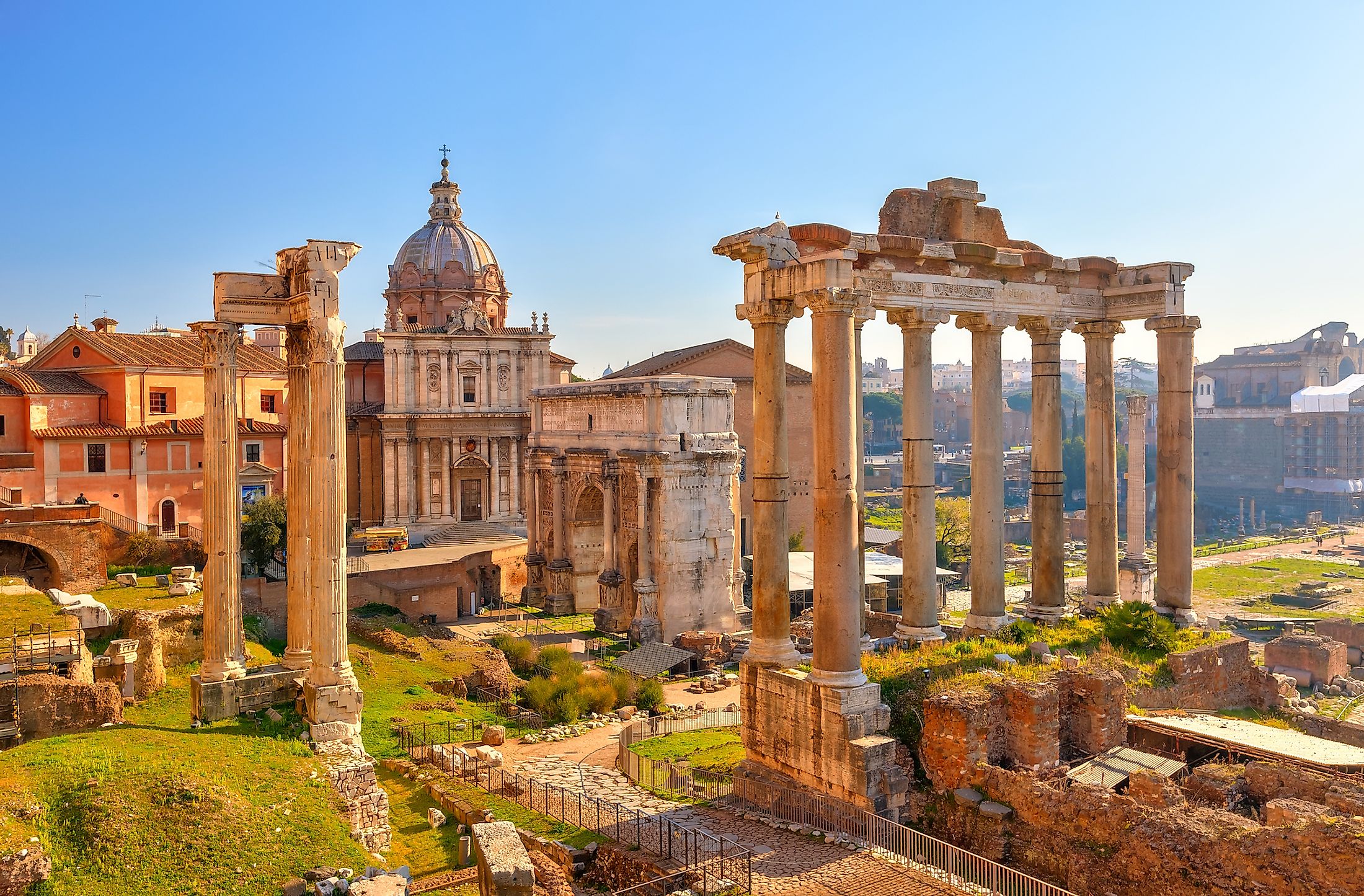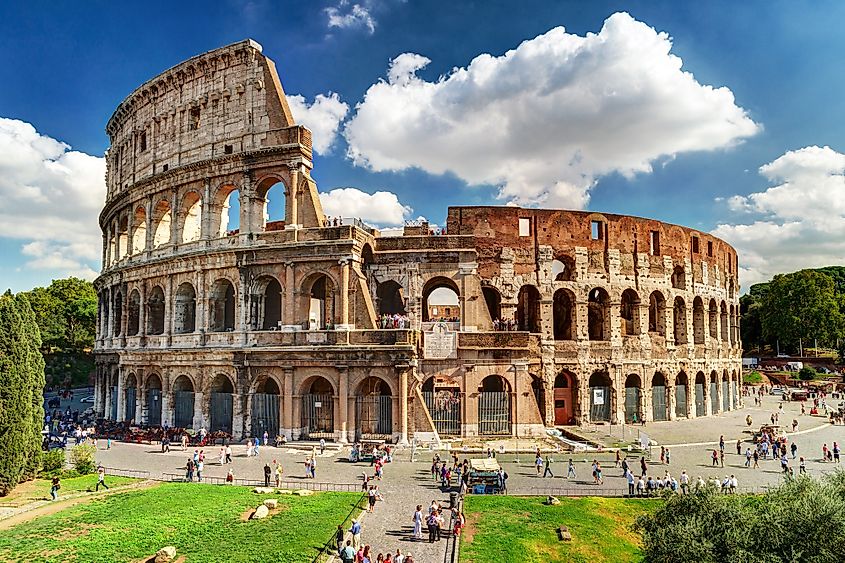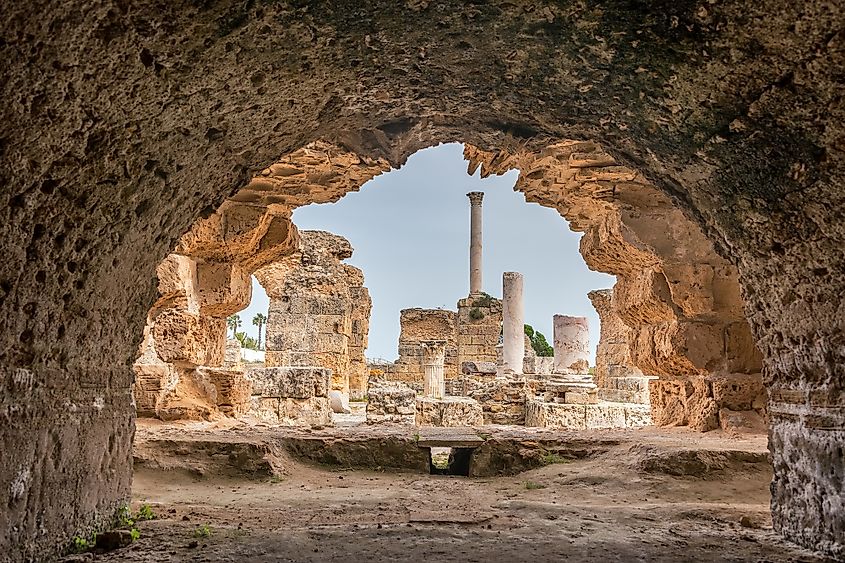
The 9 Most Important Cities Of The Roman Empire
The Roman Empire was an emperor run period of Ancient Rome which included strongholds and territories across Western Asia, Northern Africa, and various regions of Europe, especially around the Mediterranean Sea. The empire was ruled by force, and is famed for having the strongest army in the world, at the time.
The Romans were also significant for helping to develop various practices of law and government, the foundations of which shaped these modern practices today. Similarly, the Roman Empire brought mass advances in the world of engineering and infrastructure as roads were laid, the first proper cities built, and an entire form of long-lasting architecture was developed. There were several major cities which were extremely important to the Roman Empire at the time. These nine cities each served a purpose in maintaining and strengthening the empire in their own way. They are:
Rome

Of course the most well known city of the Roman Empire is the city of Rome. Now the capital city of Italy, Rome was also an important stronghold in the ancient empire. As the empire grew, the strength and power of Rome grew as well. This city was the center of the empire in many ways, and was considered to be the strongest city in the world for more than 1000 years. The location of Rome was significant in establishing its power, and its place as the ‘capital’ of the empire. Because it was located on the Italian peninsula, and along the Tiber River, it had excellent access to trade in the form of the Mediterranean Sea. This location was later significant in a militant way, as the sea and river access allowed Roman armies to send troops to conquer neighbouring territories and lands. Rome was also the center of the established government at the time, as well as a hub of entertainment and society, as it was. A number of ancient ruins can be found in modern Rome which form relics to this time, such as the Colosseum, the pantheon, and the Roman Forum.
Ephesus

The city of Ephesus was an ancient port which served as an important trading post within the Mediterranean. It was originally a Greek city, but was later gifted to the Roman Empire after the death of King Attalos III. During Roman rule, Ephesus was the capital city of its Asian province, where it continued to be an important trading center. The city had a population of roughly 250,000 people during Roman rule. The city was also important in biblical times, and was an important location for the development and spread of Christianity. Ephesus is now in modern-day Turkey, near the town of Selçuk.
Antioch

Antioch was another very important city in the Roman Empire. It served as the capital city of the Roman province of Syria, and was the third largest city in the empire. Not only was it one of the biggest, but it also held much importance. Its location situated it near a number of major trade routes, including the all important spice trade. This also meant it was a strategic outpost for the Romans. Additionally, the city was also thought to be one of the earliest centers of Christinaity, as it was in that city that followers of Jesus were first dubbed ‘christians.’ Antioch was later part of ancient Syria, and is now in modern day Turkey, as a city called Antakya. Various ruins can still be found here, including remnants of temples, theatres, aqueducts, and baths.
Carthage

Carthage was taken over by the Romans during the Punic wars. Though at the time dominance was more for dominance's sake, the importance of the city’s location was later realised, and the city was rebuilt. The city had an important strategic position along the northern coast of Africa, and on the banks of the Mediterranean sea. Today, the city of Carthage would be in modern day Tunisia, and though much of the city was destroyed, ruins from amphitheatres, baths and villas can still be seen.
Alexandria

Alexandria is generally thought of as the intellectual hub of the Roman empire. Researchers, mathematicians, and philosophers were plentiful here, and the city was one of the largest in the empire, second only to Rome. This city was an important one in Egyptian and Roman history, and was thought to be one of the most intellectually advanced areas of the time. Remnants of the great Alexandria Library can be found, as well as ancient ruins on the banks of Egypt, though many of them have sunk below sea level.
Constantinople

Constantinople was the Roman capital of the east. Its location served as a gateway city between the Euxine seas and the Mediterranean. It was on both the silk and spice roads, and as such was an important trading post of the late Roman Empire. The idea behind this city was that it would serve as a ‘new Rome,’ and its success in trade helped it to quickly grow in opulence and riches. As the Roman empire shifted eastward, the city became more and more important, and eventually the emperor of Constantinople became the ruler of the entire empire. In modern day, the city is now Istanbul, the largest city in Turkey.
Mediolanum

For a time, the ancient city of Milan was the capital of the Western Empire. This was due in large part to its location, and its sitting ruler. Because it was on the edges of the empire, the emperor had strong control over the military there, and it also ensure protection from potential Gallic threats. The city was also ruled by St. Ambrose, who had immense power within the empire. St. Ambrose was one of the few - if only - rulers who was openly allowed to disagree with the power and decisions of the emperor himself. Mediolanum is now known as Milan, and some ruins of the emperors palace, as well as Roman walls, can be found in the city today.
Thessalonika

This city was more important towards the later stages of the Roman Empire, and was a center for business and trade. It was situated on the trade route that connected Constantinople with Dyrrhachium, and thus connected Europe to Asia along this route. It became a capital for one of the four Roman districts of Macedonia, and was the sight of a major harbour build, to help facilitate trade. Thessalonika is now known as Thessaloniki and is a Greek port city on the Thermaic Gulf of the Aegean Sea. Some ancient ruins can still be seen in the city, including remnants of the palace of the fourth Roman Emperor Galerius, who lived in the city for a time.
Londinium

Londinium, or Roman London, was the capital of Roman Britain. Located where modern day London is, this Roman settlement was positioned on the River Thames as a commercial centre and major port to the rest of Britain. Londinium quickly became Britain's largest city, and was a passage point for almost all trade goods which passed further north. Eventually, though, the settlement was abandoned, and it was thought there may have been a major fire in the area. Though a huge metropolitan city today, London still shows some signs of ancient roman ruins, and further north, Roman empirical ruins such as Hadrians wall can still be seen more prominently.
Rome was a powerful and strong empire, which ruled much of the world with fierce dominance and power. Though the rule may have been harsh, the empire brought a great amount of advancement to the world, from scholars to infrastructure, and what eventually became modern government.











